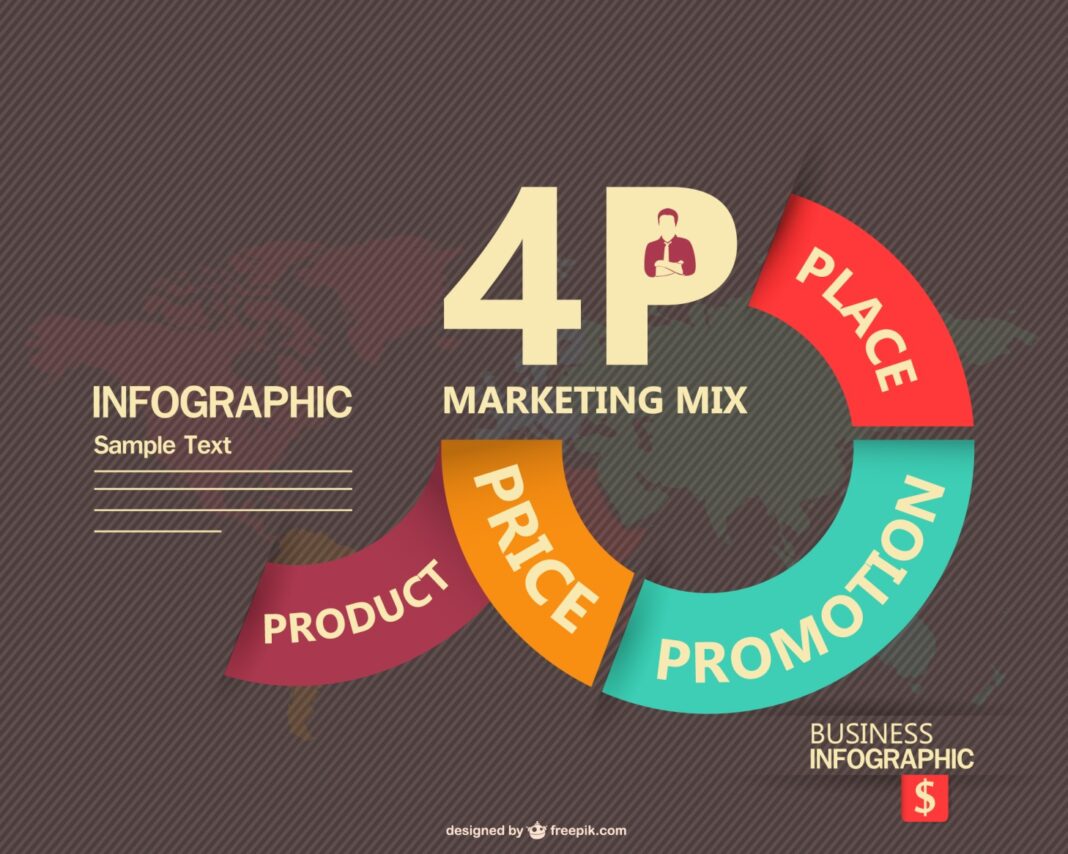Introduction
Success in marketing doesn’t come by accident—it’s the result of a well-crafted strategy. At the heart of every powerful marketing plan lies the 4 Ps of marketing: Product, Price, Place, and Promotion. These four elements form the foundation of any marketing mix and guide businesses on how to position their offerings in a competitive market.
Let’s explore each “P” in detail and see how top companies are using them right now to win customers and dominate their industries.
1. Product: What Are You Offering?
A product is the item or service a company offers to meet customer needs. It could be physical (like a smartphone), digital (like a software subscription), or even a service (like consulting or education). The product must deliver value and solve a problem to attract buyers.
Key Questions:
- What problem does this product solve?
- How is it different or better than the competition?
- What features and benefits does it offer?
Real-Time Example: Apple iPhone
Apple’s flagship product, the iPhone, isn’t just a phone—it’s a status symbol, a productivity tool, and a multimedia device rolled into one. With sleek design, regular innovation, and strong ecosystem integration, Apple creates high perceived value that resonates with its target audience.
Why it works: Apple focuses on product innovation, seamless user experience, and brand loyalty. Every new iPhone emphasizes improved camera quality, better battery life, and cutting-edge technology that keeps customers coming back.
2. Price: What Will You Charge?
Price is what customers pay for a product or service. Pricing must reflect both value and market demand. If it’s too high, you risk losing customers. Too low, and you may not cover costs or may devalue your brand.
Key Pricing Strategies:
- Premium Pricing – High price, high value
- Penetration Pricing – Low price to gain market entry
- Freemium Models – Basic free version with premium upgrades
- Psychological Pricing – Pricing like $9.99 instead of $10 to feel “cheaper”
Real-Time Example: Netflix
Netflix uses a tiered pricing model. It offers Basic, Standard, and Premium subscription plans to cater to different audience segments. This strategy allows them to maximize revenue while giving customers pricing flexibility.
Why it works: With varied content needs and device usage, customers can choose the plan that fits their preferences. Plus, Netflix adjusts its pricing across countries based on income levels and competitor actions.
3. Place: Where Will You Sell It?
Place refers to the distribution channels used to deliver the product to customers. It includes physical locations (retail stores), digital platforms (eCommerce), and logistics (warehouses, delivery partners).
Key Distribution Channels:
- Direct to consumer via online store
- Retail partnerships
- Mobile apps
- Marketplace listings (Amazon, Etsy, etc.)
Real-Time Example: Nike
Nike sells its products through its own branded stores, website, and mobile app—Nike Direct—as well as through third-party retailers like Foot Locker and Amazon.
Why it works: By owning the customer experience on its direct channels, Nike strengthens brand loyalty, collects first-party data, and improves profit margins. Its retail partnerships help scale globally without building all infrastructure from scratch.
4. Promotion: How Will You Let People Know?
Promotion is how you communicate your product to potential customers. This includes advertising, public relations, social media, influencer marketing, and content creation.
Common Promotional Methods:
- Social media campaigns
- Email marketing
- TV and digital ads
- Search Engine Optimization (SEO)
- Influencer and affiliate marketing
Real-Time Example: Coca-Cola
Coca-Cola’s promotion strategy is a masterclass in brand awareness. Whether it’s seasonal ads (“Share a Coke”) or sponsoring major events like the FIFA World Cup, Coca-Cola stays top of mind through emotional storytelling and global campaigns.
Why it works: The brand invests in high-visibility promotion that connects emotionally with people, creating a brand identity tied to happiness, friendship, and celebration.
The 4 Ps Table Summary with Company Examples
| P | Definition | Example Company | Real-Time Example |
|---|---|---|---|
| Product | The item or service offered | Apple | iPhone with advanced camera and iOS integration |
| Price | The cost customers pay | Netflix | Tiered monthly subscription plans |
| Place | Distribution strategy to reach the market | Nike | Sells through app, website, retail stores, and Amazon |
| Promotion | Methods used to communicate the product | Coca-Cola | Global TV and social media campaigns like “Share a Coke” |
Conclusion: Why the 4 Ps Still Matter Today
Marketing has evolved with technology, but the 4 Ps remain the core of every successful strategy. These elements help businesses align their product offerings with customer needs and market demands.
Companies that master the art of balancing product innovation, competitive pricing, smart distribution, and impactful promotion are the ones that stay ahead.
Whether you’re launching a startup or running a billion-dollar brand, keeping the 4 Ps in check ensures long-term growth and strong customer relationships.
Frequently Asked Questions
Q1: Which of the 4 Ps is most important?
It depends on your business stage. For a new product, the Product is key. For market expansion, Promotion or Place may be more critical.
Q2: Are the 4 Ps outdated in digital marketing?
No. The fundamentals still apply. In fact, digital tools make it easier to optimize each P through analytics, A/B testing, and automation.
Q3: What’s the difference between Place and Promotion?
Place is where customers can buy the product. Promotion is how you tell them about it.
Q4: Can small businesses use the 4 Ps?
Absolutely. It’s even more important for small businesses to get the basics right to compete with larger players.
Q5: Are there more than 4 Ps?
Yes, modern marketing sometimes includes 3 more: People, Process, and Physical Evidence, especially in service-based industries.



